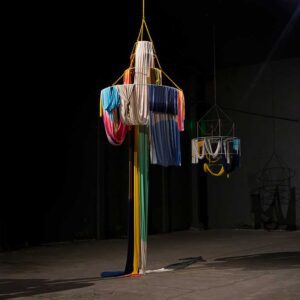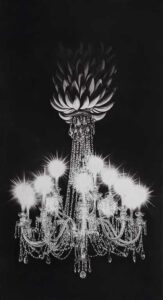Summary: Guerrero created an important invitation to a long, ongoing conversation through orchestrating key voices from many different perspectives. This was not about art market viability, but rather a testimony to the power of collective voices.

(Photo Deirdre Power)
Juxtapositions of decadence and abjection, survival and compassion, are created with clever consider-ation in each venue of the Eva International Biennial 2018. Held across Limerick, along with a satellite exhibition at the IMMA in Dublin, it features both historical and contemporary artists, to create a challenging narrative addressing issues of power with uncanny, yet relevant, allusions to current issues. This year, Eva coincides with a historical decision for Ireland regarding whether or not to repeal the 8th Amendment of their constitution which criminalized abortion. This referendum (and the final vote choosing to repeal on May 25) highlighted the predominant desire within Ireland to be self-governing for its people, and collectively as a progressive democratic state.
Invited curator, Columbian-born Inti Guerrero, places Irish artist Sean Keating’s painting Night’s Candles Are Burnt Out (1927) and its depiction of a hydroelectric dam built on the Shannon river marking the rise of modernism and new industry in Western Ireland, as the initial talking point of the exhibition. The constellation of works radiating out from a humble handful of Keating’s additional paintings in the Limerick City Gallery of Art, explore the meeting points of people and industry, whether in collaboration or resistance.
Various representations of chandeliers by Lee Bul (South Korea), Gonzalo Fuenmayor (Columbia), Steven Cohen (South Africa/France) and Isabel Nolan (Ireland) were positioned together to illustrate the unhealthy marriage of wealth and destruction, or the pollution of something beautiful. Bul’s sculptural chandelier emphasized its excessive elements of crystalline glitter and light contrasted with the stripping of Nolan’s interpretation of the uselessness of excess within the metal skeletal chandelier-shaped structure, ironically titled Radiance (2017).
Cohen’s video of a drag performer in chandelier tutu and six-inch heels, dancing against the backdrop of the destruction of a shanty-town in Johannesburg was reminiscent of Cuban artist, Felix Gonzalez-Torres’ installations, Finding strength in degradation during the AIDS crisis of the ’90s as seen in his Untitled (Curtains) 1995; glittering opulence in the face of nothingness.
Fuenmayor’s photograph of a crystal chandelier bolstered by a large bunch of bananas was a parallel nod to colonialism built on the exploitation of a land and its people.

Similar groupings brought together works related to the Holocaust victims of Poland in WWII (Jenna Tas – Netherlands), with satirical political paintings depicting the Troubles of Northern Ireland in the last century (Rita Duffy, N. Ireland), leading into a particularly haunting video and sound piece, 11’09″01 September 11, (2002) by Alejandro González Iñárritu (Mexico/USA), consisting of cut-up recordings from short films made in response to the 9/11 attacks in New York, with brief flashes of amateur video of bodies falling from the World Trade towers.
Much like the discussions of the 8th amendment in rallies and in community halls happening throughout Ireland, the works selected for the exhibition highlighted the role and power of the individual against the ambiguous complexities of the State. I visited the Biennial the day after the repeal of the amendment. Perhaps this is why I responded to the optimism within these works, dealing with the cycles of oppression and resistance which do, occasionally, produce the betterment of human rights and social justice in spite of the systems designed to suppress and repress.
Lisa Newman
Letters Volume 33.no.1 September / October 2018 p 27
